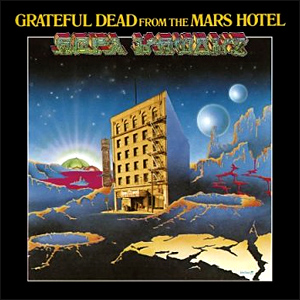Overall I think of them as having a less than stellar recording career. I tend to like studio records more than live ones, and the Grateful Dead struggled to make the most of their studio time. More on that after I very briefly deal with their recorded live legacy.
The Grateful Dead made a lot of live records, and if you include the retrospective releases, the number is quite staggering. I know Deadheads that swapped tapes and talk about this show or that show as classics, but I just don't have the time to listen to three years of Dead shows to find the great ones. I like Live/Dead 1969 a lot, and the Dark Star/St. Stephen/The Eleven medley that takes up the first three sides is very fine. I also liked Grateful Dead (Skull and Roses) 1971, which included two sides of concise tunes that feature a super hot band and great songs. Europe '72 is a solid and sprawling 3-LP set featuring more acoustic guitar driven versions. After that I never felt like I needed more live material, although I do own a few of the retrospective releases on CD, and they document good shows. The trouble is finding the ones you might want in an overwhelming sea of choices.Back to their studio work. The early records never quite did it for me. Grateful Dead 1967, Anthem of the Sun 1968, and Aoxomoxoa 1969 are all generally well regarded, but only Aoxomoxoa ever really impressed me. I'm not a huge blues fan, and much of their work is blues twisted around folk and psychedelia that just doesn't connect with me. Your results may vary. While I'm delving into their lesser studio work, let me just say that most of what they did in the studio is disappointing. They made a total of thirteen studio records (fourteen if you count Ace- see below) from Grateful Dead 1967 to Built To Last in 1989. Everything after 1976 is less than terrific- Terrapin Station, Shakedown Street, Go To Heaven, In The Dark, and Built To Last. These records aren't terrible, but there always seems like something is missing. The 2015 2-CD The Best of The Grateful Dead on Rhino is a fine collection that touches on all of their studio recordings, and is as good a sample as one could expect.
There are no less than 165 (!) retrospective live recordings to choose from including the Dick's Picks series, the Road Trips series, the Dave's Picks series, and some seventy one-offs released between 1991 and 2022, not including six others released while they were still together. So if you're really interested (or crazy), you can fill your head with live performances from throughout their 20 year career, and decide for yourself which version of Dark Star is the best.











